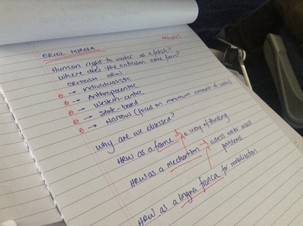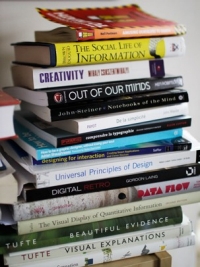1. ...do well in class discussion
Before class: In addition to doing class readings, you should note down questions and comments while reading that you can bring to the discussion, writes University of Washington Professor Ralina Joseph.
Once you’re in class, Joseph recommends staying away from lambasting the reading or author of the week. Instead, “attempt to articulate its contributions/interventions as well as limitation,” she writes. If you can, connect the weeks’ reading with those from other classes or with your prior knowledge.
Kester also recommends rephrasing the text’s conclusions in discussion. If you're looking for a good way to ground an argument is to begin with examples from the text.




